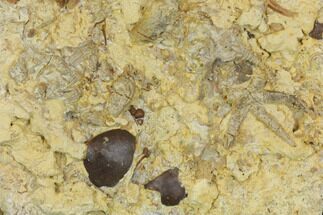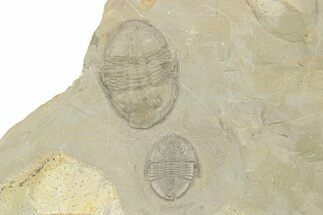This Specimen has been sold.
1.7" Homotelus Trilobite With Partials - Bromide Formation, Oklahoma
This is a 1.7" long specimen of the Upper Ordovician trilobite Homotelus bromidensis from the Bromide Formation of Oklahoma. Additional trilobite segments, heads and tails can be found throughout the rock adjacent to the nearly complete specimen.
About Trilobites
Trilobites are an extinct class of marine arthropods that thrived for nearly 270 million years, from the early Cambrian to the end of the Permian period (around 521 to 252 million years ago). They are one of the most successful and diverse groups in the history of life, with over 25,000 described species spanning a wide range of sizes, shapes, and ecological niches. Known for their distinctive, segmented exoskeletons, trilobites provide invaluable insights into the evolutionary history of arthropods and the dynamics of ancient marine ecosystems.
Trilobites are an extinct class of marine arthropods that thrived for nearly 270 million years, from the early Cambrian to the end of the Permian period (around 521 to 252 million years ago). They are one of the most successful and diverse groups in the history of life, with over 25,000 described species spanning a wide range of sizes, shapes, and ecological niches. Known for their distinctive, segmented exoskeletons, trilobites provide invaluable insights into the evolutionary history of arthropods and the dynamics of ancient marine ecosystems.
SPECIES
Homotelus bromidensis
AGE
LOCATION
Ardmore, Carter County, Oklahoma
FORMATION
Bromide Formation
SIZE
1.7" long on 2.6 x 2.45" rock
CATEGORY
SUB CATEGORY
ITEM
#197991
We guarantee the authenticity of all of our specimens.
 Reviews
Reviews














